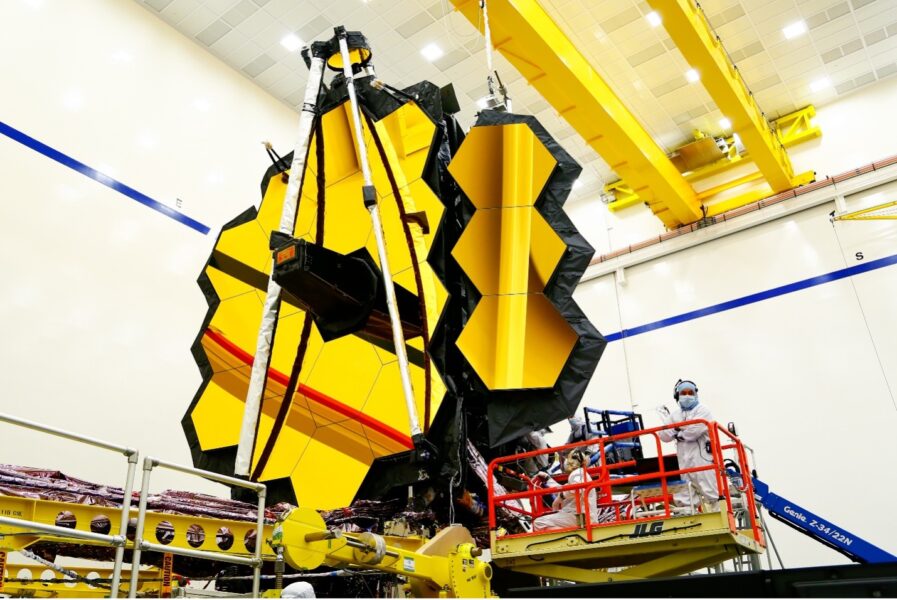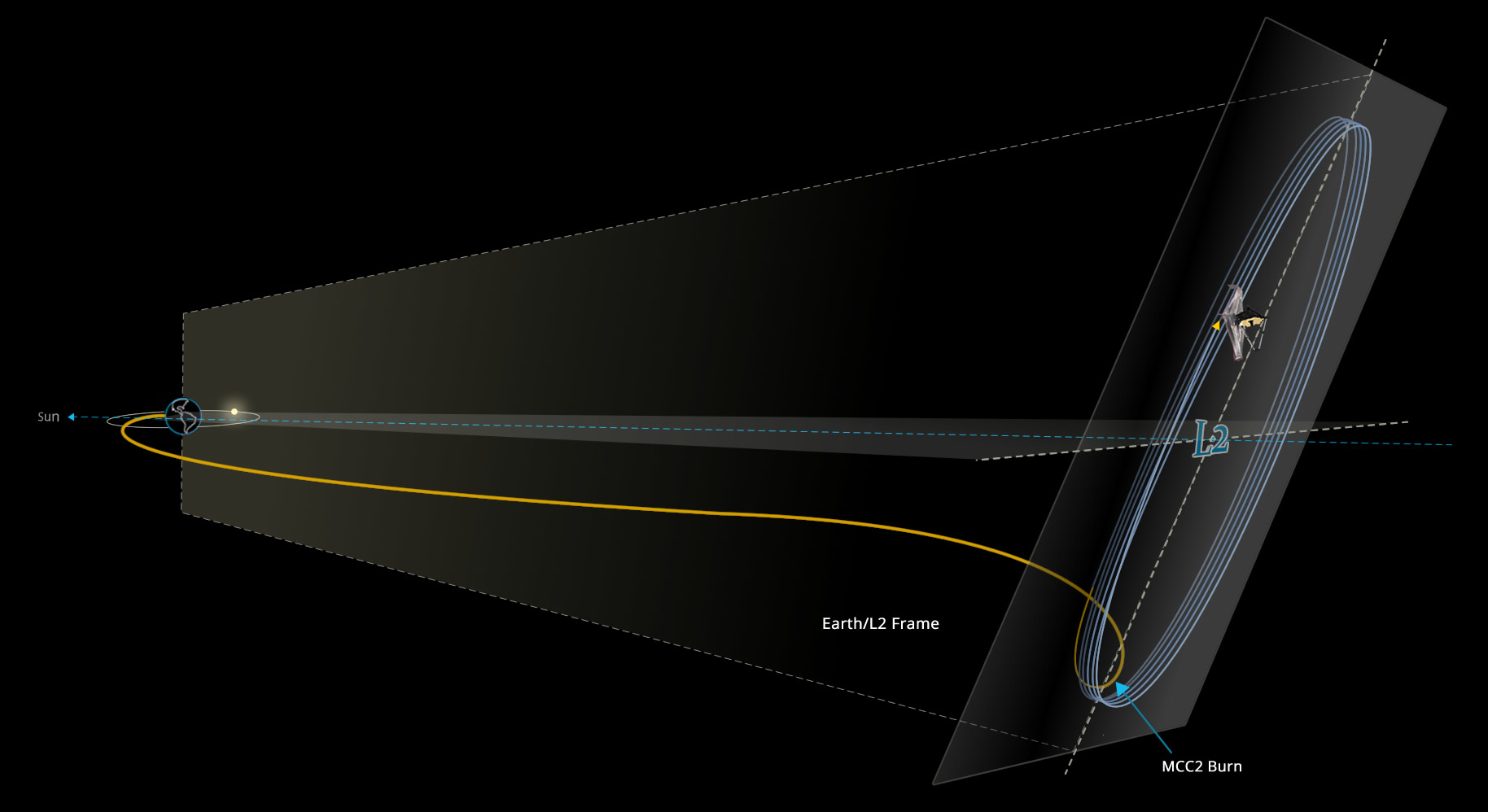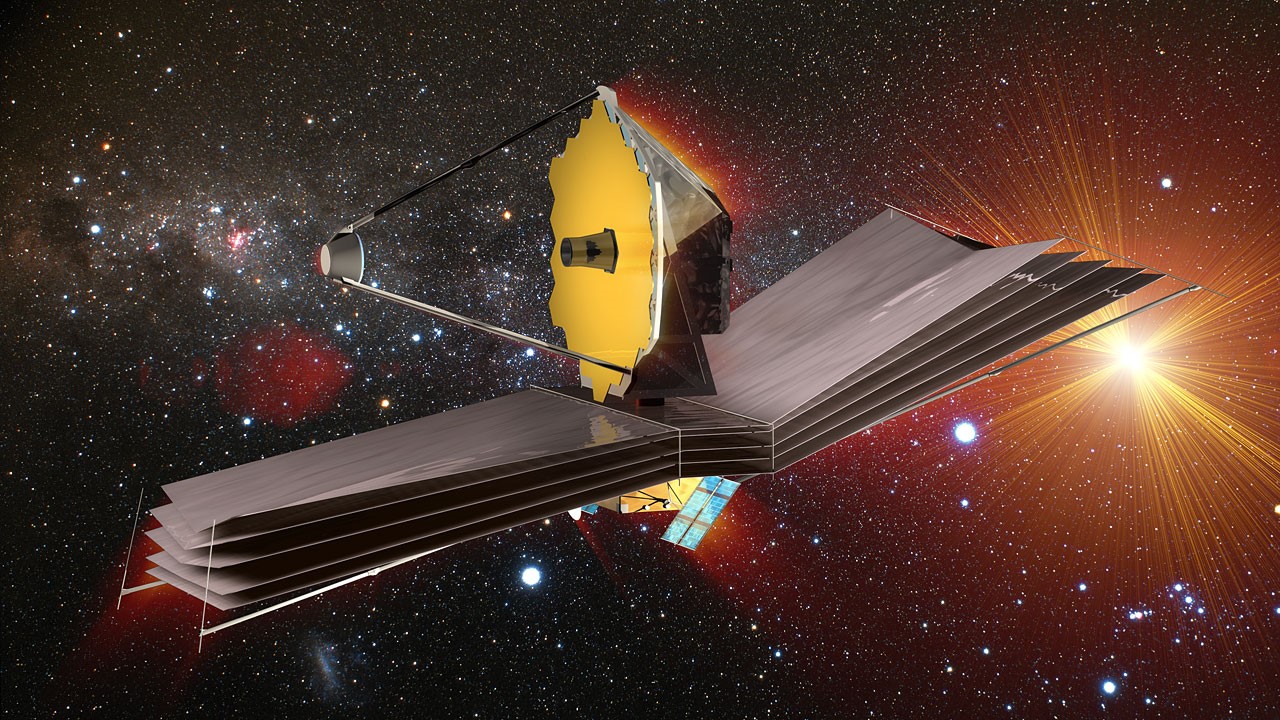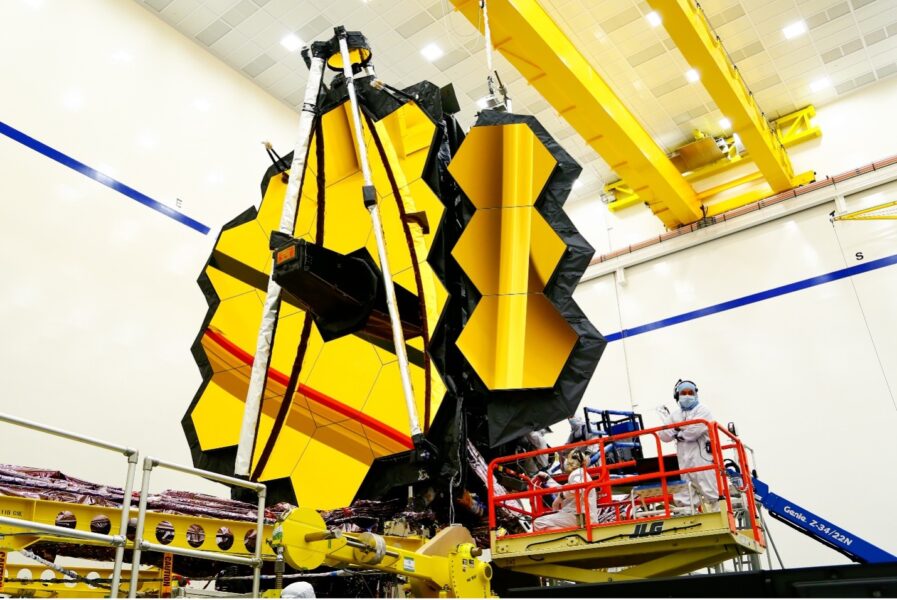
The James Webb Space Telescope Has Finally Reached L2
After multiple decades of work, and around $10 billion spent, the James Webb Space Telescope was ready to be launched. Many of us have been keeping track of its progress through development, testing, and it’s trip to L2. Being the biggest and most complicated telescope ever sent into space, it caught a lot of people’s attention. Now after all this time, it has managed to reach its final destination.
The James Webb Space Telescope after around an entire month of travel through space has reached Lagrange point 2 or L2. Through this trip, it has managed to successfully complete hundreds of different developments and deployments. After Webb’s final insertion burn around 1 day prior, it has traveled close to 1 million miles away from Earth. It now has even bigger plans for the future.
The launch and deployment of this telescope were extremely ambitious to the point where it could not afford a single error. However, NASA along with other agencies working on Webb managed to test, innovate, create, and launch the telescope successfully. Here I will go more in-depth into the most recent events, Webb’s current position, what’s next, and more.
The Final Insertion Burn

After what feels like forever, Webb is officially orbiting L2, the same location it will stay for the rest of its operational life. Less than a day ago, Webb initiated its final insertion burn to perfect its trajectory towards orbit. This specific insertion burn was the final of three burns and labeled as MCC2. The vast majority of the energy required to place Webb in L2 orbit was provided by the Ariane 5 rocket. After the release of the observatory from the rocket, several small tweaks to the trajectory were executed, also known as mid-course correction burns, or MCC, to ease the observatory into its operating orbit. MCC2 was the final burn to fine-tune Webb’s halo orbit. Webb launched on the sun-facing side of the earth and traveled a slightly curved trajectory for close to 1,000,000 miles or 1,609,344 kilometers to enter its L2 halo orbit.
Specifically, NASA confirmed Webb fired its onboard thrusters for around five minutes to complete the telescope’s course-correction maneuver. To put in perspective how fine-tuned and accurate this burn was, it only added about 3.6 miles per hour to Webb’s overall speed. However, this small adjustment was plenty to align the telescope with its preferred halo orbit. A halo orbit is one which rather than follow a single path, is an orbit that periodically varies through a series of paths. The ‘Earth/L2 frame’ orbits the Sun while Webb orbits L2. Also, note Webb’s orientation; the sunshield is perpendicular to the Sun so Webb’s mirrors and instruments are in cold complete darkness. NASA provides accurate temperatures of both sides of the telescope to help put in perspective the vast differences. On the cold side, Webb is experiencing close to negative 350 degrees Fahrenheit while the hot side is around 130 degrees Fahrenheit.
What’s Next?

After just over a month of space travel, Webb is officially fully deployed and in the correct orbit. This is not only a massive achievement for the agencies and companies involved but humankind as well. However, Webb is just getting started in terms of preparing to take its first images and more. Now that Webb is deployed and at L2, it needs to start the lengthy process of aligning each of its mirror segments. As many of us know by now, Webb’s primary mirror is made up of 18 separate segments that unfold, deploy, and work together as one once aligned. Due to the folding process along with the necessary deployment, once the mirrors are in position, they still need to be aligned. Specifically, each of these mirrors needs to be in an exact position, and have the correct curvature to produce quality images. If not properly aligned, Webb will capture nothing but a blurry and distorted mess. Engineers adjust the positions and shapes of the mirror segments to achieve precise alignment, using the seven actuators which are tiny mechanical motors attached to the back of each one of the mirror segments.
For each segment, six of these actuators are placed into groups of two, at three equally spaced points along the outside of the mirror to adjust the segment’s position. In addition, one is attached to six struts that are connected to each of the hexagonal mirror segment’s corners to adjust the segment’s shape. The actuators on each mirror segment are capable of extremely minute movements, which allow engineers to align the entire primary mirror by finely adjusting each mirror segment. They can move in steps that are a fraction of a wavelength of light, or about 1/10,000th the diameter of a human hair. These actuators can also be used to precisely reshape each mirror segment to ensure they all match up once aligned. The ability to change the mirror alignment and shape is critical because the mirror must be unfolded from its unaligned stowed position when the telescope deploys. This test verifies the actuators have enough range of movement once they are in space, at their operational temperature of about negative 388 degrees Fahrenheit. This process of extremely minute and precise adjustments and tests of Webb’s mirrors is expected to take around 3 months to get perfect. From here Webb will be ready to discover incredible things.
Future Of Webb
While it seems like the James Webb Space Telescope has already done so much, it hasn’t even scratched the surface yet. In a few months, if everything goes according to plan, Webb will begin looking into the past of the universe. Specifically, Webb will explore and provide invaluable information about the early universe, galaxies over time, star lifecycle, and even other worlds. The Hubble is not nearly as powerful as Webb but was still capable of facilitating fascinating discoveries that changed how we view our planet, solar system, and more. The James Webb Space Telescope will be a giant leap forward in our quest to understand the Universe and our origins. Webb will examine every phase of cosmic history: from the first luminous glows after the Big Bang to the formation of galaxies, stars, and planets to the evolution of our own solar system. Soon decades of work and billions of dollars are set to pay off in unimaginable ways. What many considered impossible is now orbiting L2 nearly one million miles away from Earth. Webb will produce unique images that are expected to be uniquely beautiful. For now, we will have to wait and keep track of Webb’s alignment and overall continued progress.
Conclusion
After over 30 long days of space travel, the James Webb Space Telescope has officially arrived at L2. Through this time period, it has deployed hundreds of different components throughout the entire telescope. All of which needed to work perfectly in order for Webb to operate properly. Less than a day ago it completed the final insertion burn that sped it up slightly to enter the correct halo orbit. It still will be months before Webb’s first images however it has made incredible progress. We will have to wait and see how Webb progresses, its impact on the future of the space industry, science, and much more.
